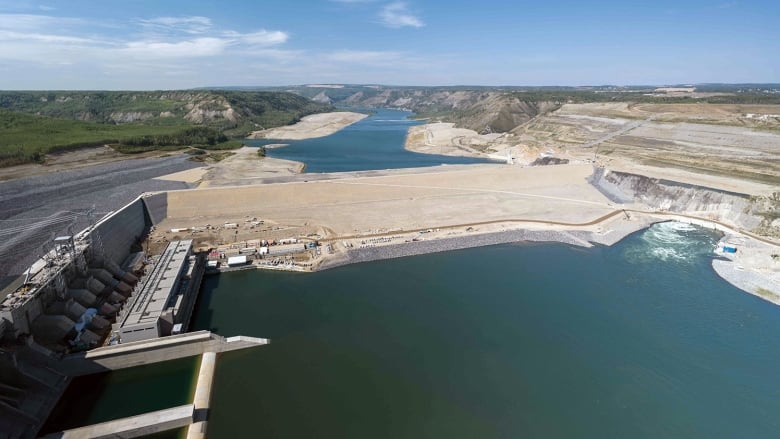N.W.T. officials stress need for information-sharing agreement with B.C. Hydro on Site C dam
B.C. Hydro say the current provincial drought conditions will not impact the filling of the Site C reservoir

AsB.C. Hydro begins filling its Site C reservoir for its hydroelectric dam, N.W.T. MLAsare raising questions about how the work will affect the territory's already record-low waterlevels downstream.
The questions came at Wednesday'sbriefing from the Department of Environment and Climate Change (ECC)on low water levels in the territory.
Julian Kanigan, assistant deputy minister of environmental management, monitoring and climate change, said the filling of Site C is projected to have a relatively minor impact on water levels compared to the effects of the current drought, which caused significant drops in water levels during the summer of 2023.
He said filling the dam could lower Great Slave Lake by another 8.5 centimetres.
"The 8.5 centimetreloss on Great Slave Lake would not be permanent, as water is always moving through the system," Kanigan said.
According to the briefing, officials say Great Slave Lake has dropped over 1.2 metresin twoyears and is currently at its lowest recorded level.
"It may not sound like a lot, but generally speaking, 8.5 centimetres may not have mattered in 2021, but in 2024, it has significant impact,"MLA for Yellowknife CentreRobert Hawkins said.
A news release fromB.C. Hydro, also said the current provincial drought conditions will not impact the filling of the Site C reservoir. Downstream water flows from Site C will remain within the normal operating range and be similar to levels over the past couple of years.
Setting up an information sharing agreement
To be prepared, ECC has initiated steps to set up an agreement with B.C. Hydro.
"ECC has recently sent another letter to ask B.C. Hydro if they would be willing to establish an information-sharing agreement with the GNWT to provide more details on their downstream considerations," Kanigan said.
Erin Kelly, deputy minister with ECC, saidthey will monitor the drop and escalate it if itbecomes too concerning.
"I think the way we handle it right now is by continuing to monitor and watch. If we see a significant impact, we will need to discuss it with B.C. Hydro, which would involve political intervention by our minister," Kelly said.
B.C. not bound by transboundaryagreement
Officials speaking at the committeesaidthe current transboundary water agreement between the N.W.T. and B.C. applies to the Liard River but not the Peace River in B.C., as the Peace River flows into Alberta and not directly into the territory.
They saidthedepartment is in regular contact with B.C. Hydro, and the government of Alberta has been providing the N.W.T.with updates consistent with the transboundaryagreement, as Alberta is immediately downstream of Site C.












_(720p).jpg)


 OFFICIAL HD MUSIC VIDEO.jpg)
.jpg)



























































































